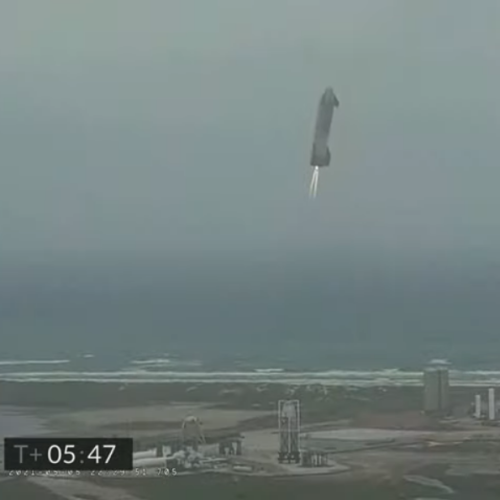No, that is not a sunspot on Mars!
Cool image time! The picture to the right, cropped to post here, was taken on April 20, 2023 by the high resolution camera on Mars Reconnaissance Orbiter (MRO). While at first glance this Martian terrain vaguely resembles the granular surface of the Sun, with the largest depression having its own faint resemblance to a sunspot, the resemblance exists only in our feverish imagination.
The depression might have been formed by an impact, though it is also possible it is a caldera, not of lava but of ice processes. The granular surface is likely resulting from the sublimation of ice, creating random holes and ridges as underground material changes from ice to gas and escapes at weak points on the surface.
My guess that we are looking at ice processes is based on the location, not far from where the first manned spacecraft will likely land.
» Read more
Cool image time! The picture to the right, cropped to post here, was taken on April 20, 2023 by the high resolution camera on Mars Reconnaissance Orbiter (MRO). While at first glance this Martian terrain vaguely resembles the granular surface of the Sun, with the largest depression having its own faint resemblance to a sunspot, the resemblance exists only in our feverish imagination.
The depression might have been formed by an impact, though it is also possible it is a caldera, not of lava but of ice processes. The granular surface is likely resulting from the sublimation of ice, creating random holes and ridges as underground material changes from ice to gas and escapes at weak points on the surface.
My guess that we are looking at ice processes is based on the location, not far from where the first manned spacecraft will likely land.
» Read more




